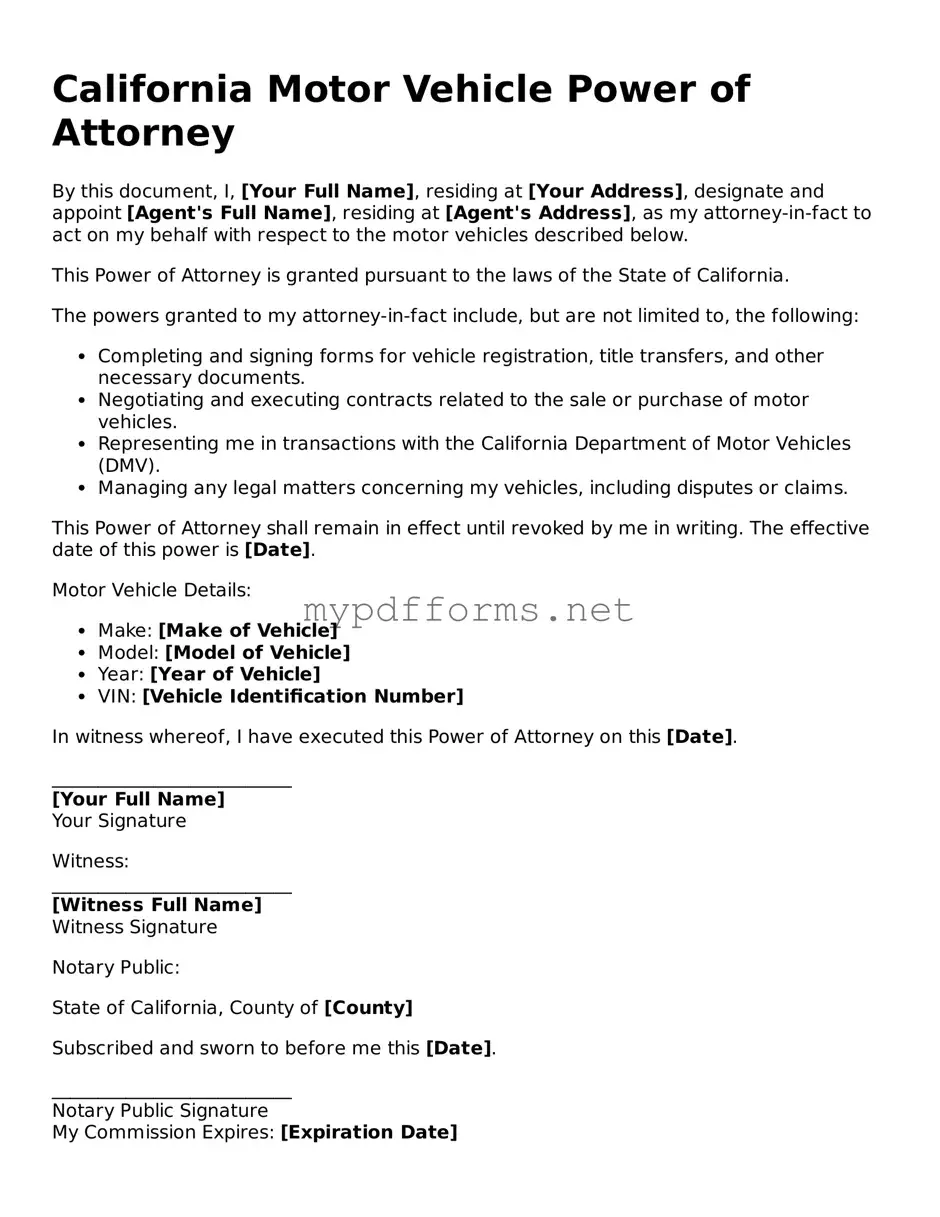The California Vehicle Bill of Sale is a document that serves as proof of the sale of a vehicle. Like the Motor Vehicle Power of Attorney, it allows for the transfer of ownership from one party to another. Both documents are essential in facilitating vehicle transactions, ensuring that the buyer has the legal right to take possession of the vehicle and that the seller is protected from any future claims related to the vehicle.
The Vehicle Registration Application is another important document. It is used to register a vehicle with the state after purchase. Similar to the Power of Attorney, it requires signatures from both the buyer and seller, indicating their agreement on the transaction. Both documents help establish a clear chain of ownership and are necessary for legal compliance when operating a vehicle on public roads.
The Release of Liability form is also comparable. This document informs the Department of Motor Vehicles (DMV) that the seller is no longer responsible for the vehicle after the sale. Like the Motor Vehicle Power of Attorney, it protects the seller from any liabilities that may arise after the transfer of ownership. Both documents ensure that the transaction is documented and that the seller's responsibilities are officially terminated.
The Application for Duplicate Title is similar in that it involves the legal transfer of ownership rights. If a vehicle title is lost or damaged, this form allows the owner to obtain a new title. The Motor Vehicle Power of Attorney can be used to authorize someone else to apply for this duplicate title, ensuring that the process can continue smoothly without the original owner's presence.
The Smog Certification form is another related document. In California, many vehicles must pass a smog check before they can be sold. This form certifies that the vehicle meets state emissions standards. Like the Power of Attorney, it requires the involvement of both the seller and buyer to ensure that all legal requirements are fulfilled before the vehicle is transferred.
The odometer disclosure statement is also essential when selling a vehicle. This document records the vehicle's mileage at the time of sale. It protects both the buyer and seller from potential fraud. Similar to the Motor Vehicle Power of Attorney, it requires signatures from both parties, ensuring that both understand the vehicle's condition and history at the time of the transaction.
When navigating the complexities of firearms regulations, it’s essential for individuals to understand the documentation required for legal compliance. For those in Illinois, the process starts with obtaining the necessary forms, such as the application for a firearm. Detailed information about these requirements can be found at Illinois Forms, ensuring that applicants are well-informed and prepared to meet all necessary legal criteria.
Finally, the Vehicle Transfer Form is used when a vehicle changes ownership. It provides a record of the transaction and is often required by the DMV. Like the Motor Vehicle Power of Attorney, it involves both the buyer and seller, ensuring that the transfer of ownership is legally recognized and documented. Both documents are crucial in maintaining accurate records within the state's vehicle registration system.
